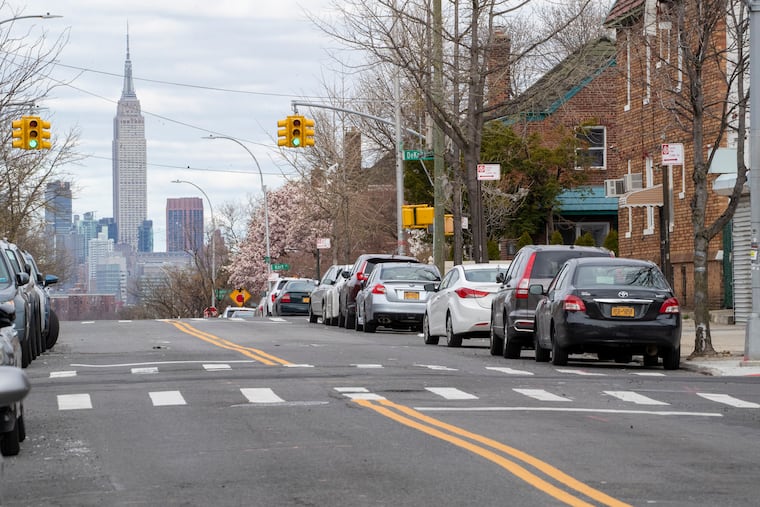If the Empire State Building can save energy and cut carbon, so can you
The owners of the Empire State Building made a bet that they could cut carbon emissions from the decades-old, 102-story behemoth and save money at the same time. Here's how they did it.

In 2009, the owners of the Empire State Building made a bet that they could cut carbon emissions from the decades-old, 102-story behemoth and save money at the same time.
Their gamble paid off: Ten years later, the building's emissions are 40% lower, its annual electric bill is $4.4 million smaller, and the entire retrofit project is well on its way to paying for itself more than twice over.
And the owners want other buildings to do the same.
Your home is not the Empire State Building. You probably don't have 6,514 windows or a multibillion-dollar operating budget. (And if you do, can I move in?) But many of the same tools the Empire State used to cut carbon and save money can still work for you.
Here’s how:
Step 1: Improve insulation
The easiest and most important thing you can do before making upgrades to your home is make sure that whatever energy you use actually stays inside it.
According to the Energy Department, an estimated 25% to 30% of household heating and cooling is lost through windows. That means a quarter of what you spend on heat and air conditioning is wasted.
You don't have to buy new windows to fight this. By refurbishing existing glass panes, the Empire State Building was able to make its windows several times more efficient.
Homeowners should check their windows for air leaks and plug them with caulk or weatherstripping. Cover the glass with a solar film or other treatments that can filter out certain wavelengths of light and prevent the transfer of heat. Install blinds or drapes; one Cornell University analysis found that a simple roller shade can reduce heat loss through a window by 24% to 31%.
Sealing off attics and garages, insulating air ducts, and other weatherization measures can also dramatically reduce energy use. One Energy Department study of New Jersey homes that overhauled their "envelopes" in this way found they saved 25% on their energy bill without replacing appliances.
Step 2: Increase indoor efficiency
When the coronavirus pandemic forced the closure of most Empire State Building offices, its owners discovered a monster lurking in the empty edifice: vampire energy use. This is power that gets pulled from outlets by devices that are left plugged in when they’re not in use. Phone chargers, coffee pots, computer cords, and cable boxes are all culprits; the Energy Department says these vampires can account for as much as 10% of a homeowner’s monthly electric bill.
The Empire State Building combats vampire usage with artificial intelligence; computer programs can shut off outlets on nights and weekends. But the average homeowner doesn’t need to go high-tech — just unplug your phone when it’s done charging, switch off power strips, and use energy-saving features that come with your devices. You can also buy advanced power strips, which will prevent electronics from drawing power when they’re not being used.
Efficient dishwashers and refrigerators are an obvious option for cutting energy use, but they can also be expensive. Yet there are plenty of measures that cost very little — or nothing — to implement. LED light bulbs last longer and use a quarter of the energy of ordinary incandescents. Routinely changing the filter on your air conditioner will reduce its energy use by about 10%. Lower the temperature of your water heater, wash your laundry in cold water, keep your home a few degrees warmer in the summer and cooler in the winter. Simply turning on a fan will allow you to raise the thermostat setting four degrees in warm weather without affecting comfort, according to the Energy Department.
Step 3: Downsize
Once a building has been streamlined as much as possible, the equipment that heats, cools and powers it can be replaced with smaller, more efficient devices. For the Empire State Building, that meant refurbishing the chiller plant and ventilation systems. For an average homeowner, it might mean getting a smaller water heater or scaling down air-conditioning units.
These measures are meaningful. According to the Energy Information Administration, the U.S. electric grid emits about a pound of carbon dioxide per kilowatt hour of power produced. (Kilowatt hour, the standard unit for measuring power consumption, describes the amount of energy that can power 1,000 watts in one hour; one kilowatt hour will power a standard 60 watt incandescent light bulb for two-thirds of a day.)
According to a study by the Pacific Northwest National Laboratory, highly insulated windows save about six kilowatt hours of energy a day. Over the course of a year, that’s about 1.5 metric tons of carbon dioxide saved — equivalent to emissions from a cross-country road trip in an average car.
Dana Schneider, the Empire State Building's vice president for sustainability, pointed out that even renewable energy sources such as solar panels have an environmental footprint from construction and transmission processes.
But reducing the amount of energy that’s needed in the first place — “that’s carbon free,” Schneider said.